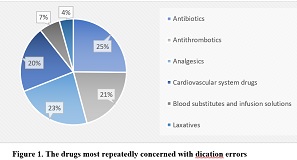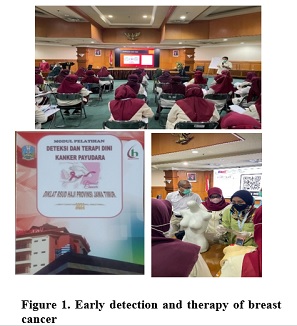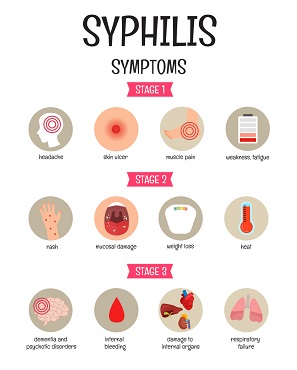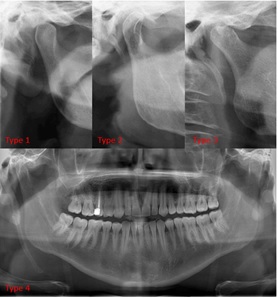Outcome and Treatment of Hepatic Epithelioid Hemangioendotheliomas in Child: A Rare Case Report
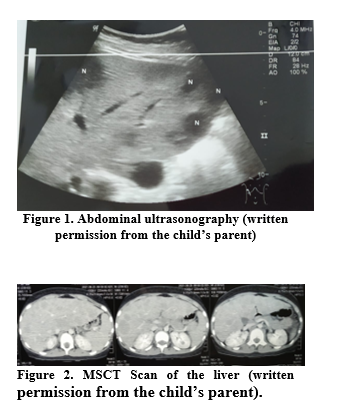
Downloads
Hepatic tumors in children are relatively rare, accounting for 0.5- 2% of all childhood tumors. Hepatic epithelioid haemangioendothelioma (HEH) is a rare vascular tumour. HEH may appear clinically with nonspecific abdominal symptoms. A 9- year-9-month-old boy presented to the paediatric outpatient clinic with sudden right upper abdominal pain, weight loss, loss of appetite, and weakness. Initial physical examination revealed hepatomegaly. Laboratory tests showed anemia and thrombocytopenia. Meanwhile, liver function tests, serum bilirubin, and serum alpha-fetoprotein (AFP) were within normal limits. Abdominal ultrasound showed hepatomegaly with multiple liver nodules involving both lobes, with a maximum diameter of 4.3 cm and hypoechoic lesions. An MSCT scan of the abdomen revealed numerous solid lesions, and the largest of which measured approximately 3 x 4 x 3.5 cm. These lesions were spread across both lobes and appeared hypodense. These findings are consistent with the hypothesis that HEH of the liver originates from both lobes. Supportive therapy with packed red cell transfusion and supplemental oxygen was started. Steroid therapy using prednisolone orally was started. The patient was following up after 2 weeks of treatment and revealed improvement in clinical condition and laboratory. Hepatic epithelioid hemangioendothelioma should be considered when round, multifocal lesions infiltrating the liver are present, and confirmed by a physician and radiologist. Long-term outcomes are uncertain; therefore, early detection, therapy, and appropriate follow-up are needed.
Ullah K, Dogar AW, Uddin S, Jan Z, Abbas SH, Shoaib A. Hepatic hemangioendothelioma – A rare case report. International Journal of Surgery Case Reports. 2021 Oct;87:106424. DOI: 10.1016/j.ijscr.2021.106424
Mehrabi A, Kashfi A, Fonouni H, Schemmer P, Schmied BM, Hallscheidt P, et al. Primary malignant hepatic epithelioid hemangioendothelioma: A comprehensive review of the literature with emphasis on the surgical therapy. Cancer. 2006 Nov 1;107(9):2108–21. DOI: 10.1002/cncr.22225
Hettmer S, Andrieux G, Hochrein J, Kurz P, Rössler J, Lassmann S, et al. Epithelioid hemangioendotheliomas of the liver and lung in children and adolescents. Pediatr Blood Cancer. 2017 Dec;64(12):e26675. DOI: 10.1002/pbc.26675
Madura C, Sacchidanand S, Barde N, Biligi D. Epithelioid hemangioendothelioma in a Child. J Cutan Aesthet Surg. 2013;6(4):232. DOI: 10.4103/0974-2077.123414
Lakshmi Sv, Prabhavathy D, Jayakumar S, Janaki C, Tharini G. Epithelioid hemangioendothelioma: A rare vascular tumor. Indian J Dermatol. 2012;57(1):53. DOI: 10.4103/0019-5154.92681
Din NU, Rahim S, Asghari T, Abdul-Ghafar J, Ahmad Z. Hepatic epithelioid hemangioendothelioma: case series of a rare vascular tumor mimicking metastases. Diagn Pathol. 2020 Dec;15(1):120. DOI: 10.1186/s13000-020-01039-2
Gurung S, Fu H, Zhang WW, Gu YH. Hepatic epithelioid hemangioendothelioma metastasized to the peritoneum, omentum and mesentery: a case report. Int J Clin Exp Pathol. 2015;8(5):5883–9. https://pmc.ncbi.nlm.nih.gov/articles/PMC4503184/
Mistry AM, Gorden DL, Busler JF, Coogan AC, Kelly BS. Diagnostic and therapeutic challenges in hepatic epithelioid hemangioendothelioma. J Gastrointest Cancer. 2012 Dec;43(4):521–5. DOI: 10.1007/s12029-012-9389-y
Bannoura S, Putra J. Primary malignant vascular tumors of the liver in children: Angiosarcoma and epithelioid hemangioendothelioma. World J Gastrointest Oncol. 2021 Apr 15;13(4):223–30. DOI: 10.4251/wjgo.v13.i4.223
Dasgupta MK, Das S, Patra C, Sarkar S. Symptomatic infantile hepatic hemangioendothelioma successfully treated with steroid. J Clin Neonatol. 2013 Oct;2(4):187–9. DOI: 10.4103/2249-4847.123099
Emre S, McKenna GJ. Liver tumors in children. Pediatr Transplant. 2004 Dec;8(6):632–8. DOI: 10.1111/j.1399-3046.2004.00268.x
Studer LL, Selby DM. Hepatic Epithelioid Hemangioendothelioma. Archives of Pathology & Laboratory Medicine. 2018 Feb 1;142(2):263–7. DOI: 10.5858/arpa.2016-0171-RS
Studer LL, Selby DM. Hepatic Epithelioid Hemangioendothelioma. Arch Pathol Lab Med. 2018 Feb;142(2):263–7. DOI: 10.5858/arpa.2016-0171-RS
Chen CC, Kong MS, Yang CP, Hung IJ. Hepatic hemangioendothelioma in children: analysis of thirteen cases. Acta Paediatr Taiwan. 2003 Feb;44(1):8–13. https://europepmc.org/article/med/12800377
Lyburn ID, Torreggiani WC, Harris AC, Zwirewich CV, Buckley AR, Davis JE, et al. Hepatic epithelioid hemangioendothelioma: sonographic, CT, and MR imaging appearances. AJR Am J Roentgenol. 2003 May;180(5):1359–64. DOI: 10.2214/ajr.180.5.1801359
Giardino A, Miller FH, Kalb B, Ramalho M, Martin DR, Rodacki K, et al. Hepatic epithelioid hemangioendothelioma: a report from three university centers. Radiol Bras. 2016 Oct;49(5):288–94. DOI: 10.1590/0100-3984.2015.0059
Makhlouf HR, Ishak KG, Goodman ZD. Epithelioid hemangioendothelioma of the liver: a clinicopathologic study of 137 cases. Cancer. 1999 Feb 1;85(3):562–82. DOI: 10.1002/(sici)1097-0142(19990201)85:3<562::aid-cncr7>3.0.co;2-t
Da Ines D, Petitcolin V, Joubert-Zakeyh J, Demeocq F, Garcier JM. Epithelioid hemangioendothelioma of the liver with metastatic coeliac lymph nodes in an 11-year-old boy. Pediatr Radiol. 2010 Jul;40(7):1293–6. DOI: 10.1007/s00247-009-1532-y
Hsieh MS, Liang PC, Kao YC, Shun CT. Hepatic epithelioid hemangioendothelioma in Taiwan: a clinicopathologic study of six cases in a single institution over a 15-year period. J Formos Med Assoc. 2010 Mar;109(3):219–27. DOI: 10.1016/S0929-6646(10)60045-9
Cerar A, Dolenc-Strazar ZD, Bartenjev D. Infantile hemangioendothelioma of the liver in a neonate. Immunohistochemical observations. Am J Surg Pathol. 1996 Jul;20(7):871–6. DOI: 10.1097/00000478-199607000-00011
Copyright (c) 2025 Bagus Setyoboedi, Rendi Aji Prihaningtyas, Sjamsul Arief

This work is licensed under a Creative Commons Attribution-ShareAlike 4.0 International License.
- The journal allows the author to hold the copyright of the article without restrictions.
- The journal allows the author(s) to retain publishing rights without restrictions.
- The legal formal aspect of journal publication accessibility refers to Creative Commons Attribution Share-Alike (CC BY-SA).
- The Creative Commons Attribution Share-Alike (CC BY-SA) license allows re-distribution and re-use of a licensed work on the conditions that the creator is appropriately credited and that any derivative work is made available under "the same, similar or a compatible license”. Other than the conditions mentioned above, the editorial board is not responsible for copyright violation.





















